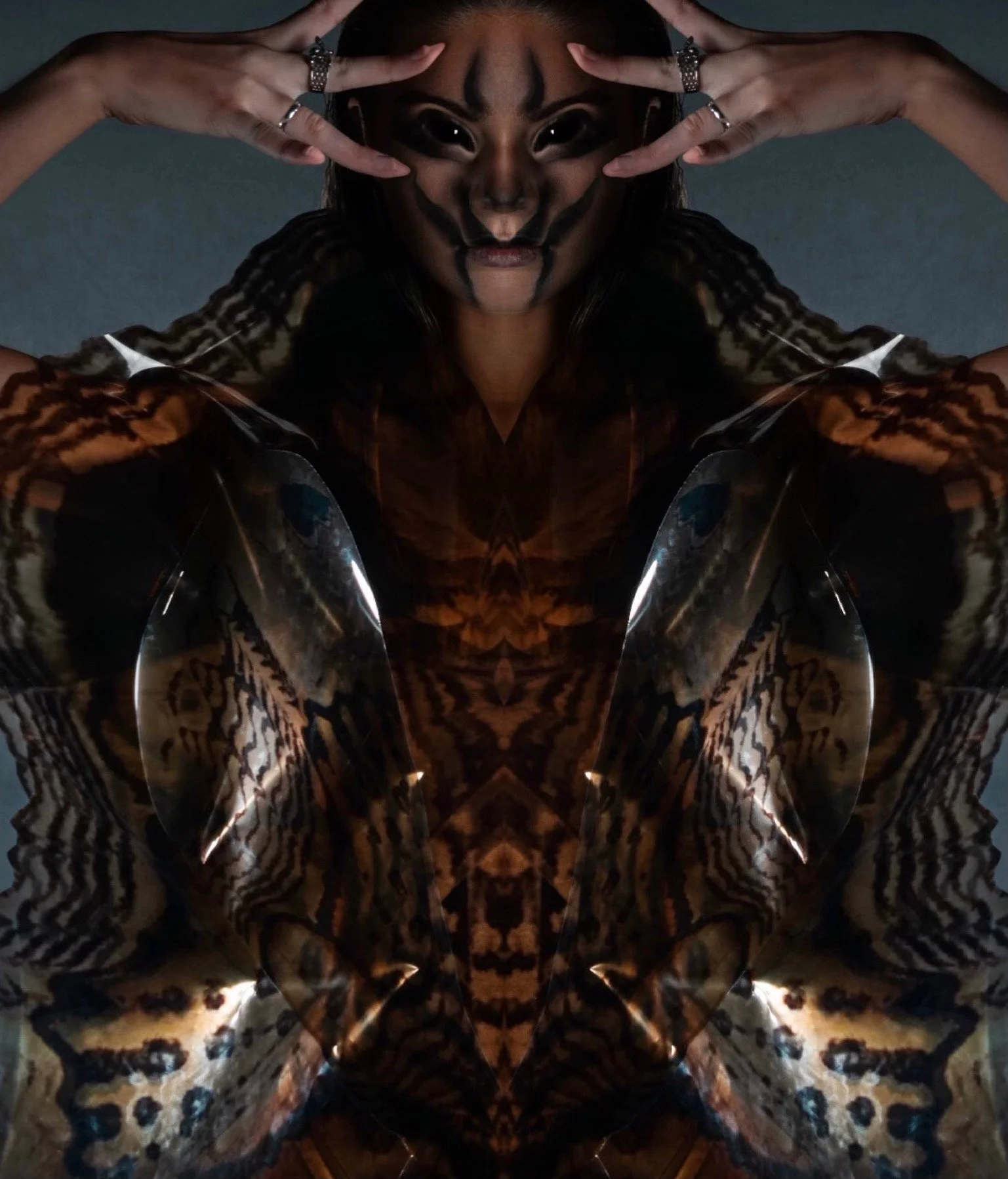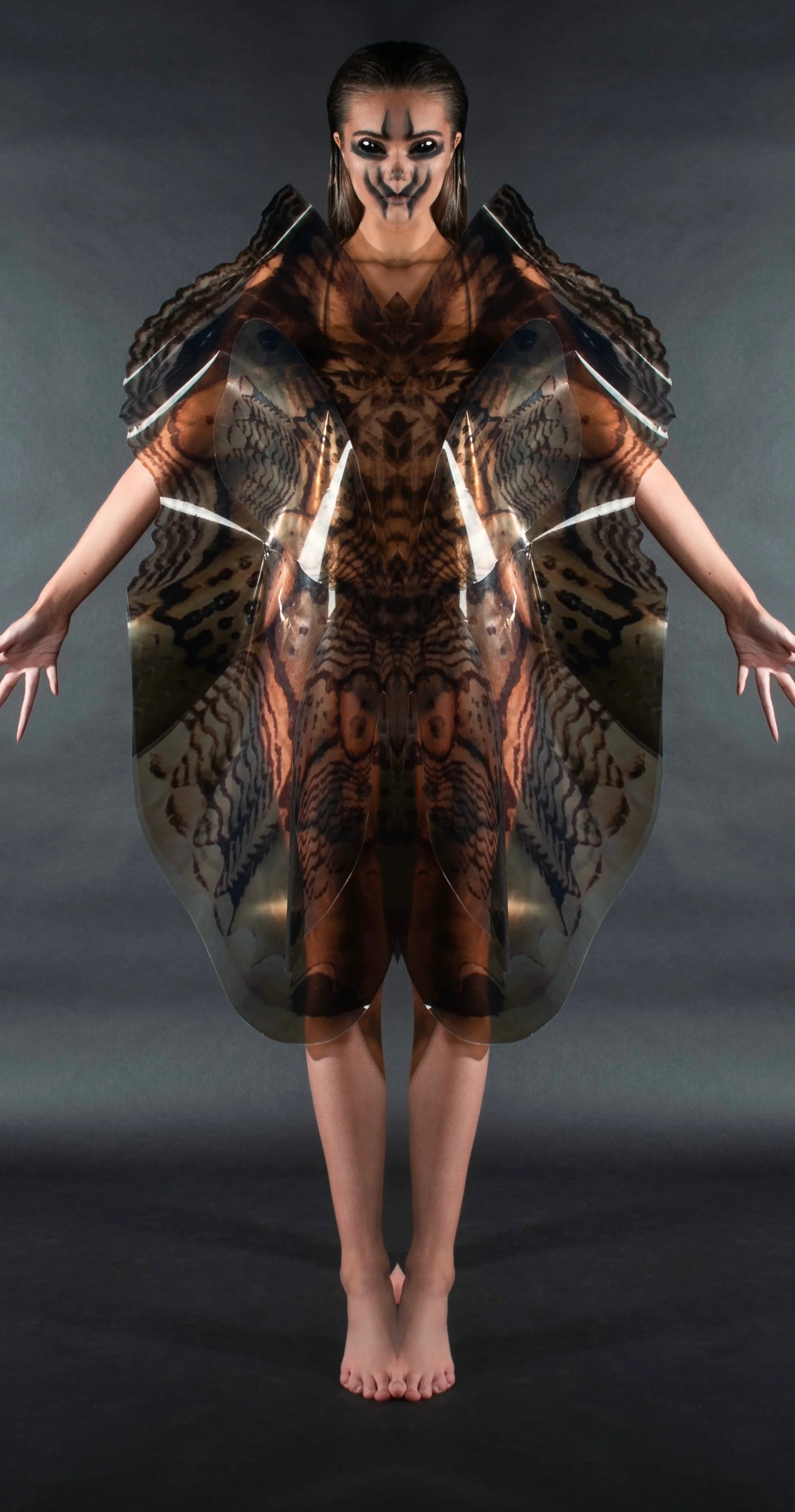
Entomophobia
“Embracing [im]perfection” works to challenge the current zeitgeist’s obsession with textile perfection; Reformulating a new method for textile rehabilitation into production cycles that work to benefit a modern audience, while simultaneously challenging the emphatic following of fast fashion and growing trend cycles through conservation and deconstruction of textile deemed unfit for use, in both a residential and industrial setting.”
“Embracing [im]perfection” works to challenge the current zeitgeist’s obsession with textile perfection; Reformulating a new method for textile rehabilitation into production cycles that work to benefit a modern audience, while simultaneously challenging the emphatic following of fast fashion and growing trend cycles through conservation and deconstruction of textile deemed unfit for use, in both a residential and industrial setting.
When initially reflecting on what circular fashion meant to me as a creative, and consumer within the industry, the problem that was most evident to me and something that has become abundantly clear over the past decades is the current fashion market’s obsession with perceived perfection in both an aesthetic and manufacturing sense. Since the rise of fast fashion and an increase in micro trend’s, leading to a speed up of the trend cycle. The increased turn around in the product life cycle has meant a significant decrease in garment quality, and a focus on overly specific, trend driven garments. This has of course led to an ever growing number of these garments being worn a few times and then deemed unfit for use due to degradation or being seen as no longer in style and as a result quickly ending the product life cycles in land fills, slowly decomposing and releasing harmful gas and chemicals into soil and water systems. Through this project, I wanted to find a solution that can not only tackle circular design moving into the future, but also work in actively reducing the amount of textiles already in landfill, which meant actively working to destigmatize the decay and natural decomposition of textiles, and work with this degradation in order to extend the products life cycle infinitely, from manufacturer to user.
My first point of reference came in the form of the Tarkhan dress, the oldest garment ever recovered currently on display at the UCL museum of egyptology. More specifically, I wanted to analyse and build upon the conservational techniques utilised by conservationists to preserve this ancient textile as a basis for my own method of conserving, and subsequently prolonging the textile currently sitting in landfill. To achieve this I separated these textiles into four stages of decomposition and, using the conservational techniques outlined in various academic papers, created a variety of samples specific to each of these states of decomposition, suspending these textiles onto conservational mesh to create new textile from fibres that would otherwise be deemed as unusable in both an aesthetic and practical sense.
After analysing these conservation methods and starting my own development, I began to think about my own impact as a designer and what I do in my design practice that could be hindering the progress of circularity. What I found was my use of calico as a waste product, and how that can be an accurate representation of the rest of the fashion industries relationship with the textile. Used for samples and off cuts of toiles that would quickly fall into obscurity and be wasted after a project had been completed, these waste textiles culminated in draws and bags filled with these toile offcuts and samples. It is this relationship with imperfection in my own work that I wanted to bring into the context of the project as a larger entity. Reflecting on this use of fabric as waste on a larger scale, and how these pieces can be recontextualised into a new product that embraces these perceived imperfections. What I developed was a technique of separating these samples into their individual panels, and reconstructing them to formulate a new flat textile that can be taken from, and added to continuously, adapting and morphing with each new pattern and garment utilising the textile.
What is successful about both of these techniques working alongside one another is the targeting of each of the multiple stages of decomposition of textile, regardless of fibre content. What this means for circularity is that these practices can be brought into landfill spaces and all of the contents, regardless of how long they have been decomposing, can be removed and recontextualised into a new product that rejects the principles of textile perfection that so heavily dictate the modern fashion cycle, embracing the natural qualities and processes of the materials we buy, and create a more conscious and accepting customer base for the future.

Method/Design Development
“Presented as juxtaposing looks, the garments reflect the disparity between Opulence and comfort, performance and reality as well as descent into and ascension from the process of grief”



